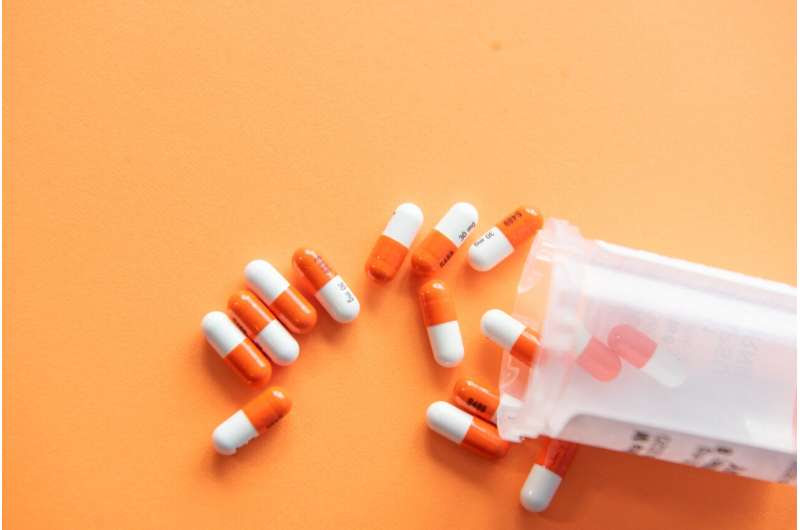by Lisa Marshall, University of Colorado at Boulder

Credit: Unsplash/CC0 Public Domain
Patients-turned-social-media-influencers routinely offer prescription drug advice to their followers and often have close ties with pharmaceutical companies, according to new University of Colorado Boulder research.
But they also tend to have good intentions, the study found.
The study, published this week in the Journal of Medical Internet Research, provides some of the first insights into the burgeoning, loosely regulated world of so-called “patient influencers,” sharing findings from 26 in-depth interviews about why and how they do it.
“The bottom line here is that patient influencers act as a form of interactive direct-to-consumer (DTC) advertising, sharing their knowledge and experiences on pharmaceutical drugs with communities of followers in which they wield great influence,” said author Erin Willis, an associate professor of advertising, public relations and media design. “This raises ethical questions that need more investigation.”
The study comes amid growing concerns about the harmful consequences of drug promotion on social media.
In recent weeks, in the wake of a slew of TikTok videos and Twitter posts touting the weight loss benefits of the diabetes drug Ozempic, patients who need the medication to manage their disease have faced global shortages. Meanwhile, those taking it “off-label” to slim down have experienced surprising side-effects, including violent diarrhea and extreme facial thinning.
“This is a great example of the power of social media and the unintended consequences,” said Willis.
A new kind of advertising
Controversial from its start in the 1980s, and still only available in the United States and New Zealand, DTC advertising enables drug companies to target consumers directly, rather than exclusively through physicians. About half of the people who ask their doctor about a drug after seeing a TV ad get it.
With trust in pharmaceutical companies and traditional media declining, drug makers are now turning to real patients as messengers, with companies like Health Union connecting them for partnerships.
Willis conducted one-on-one, hour-long Zoom interviews with influencers with a range of conditions, including lupus, fibromyalgia, Parkinson’s disease, asthma, HIV, celiac disease, chronic migraines and perimenopause. Eighteen of the 26 collaborated with a pharmaceutical company in some way.
Most had between 1,000 and 40,000 followers. Such “micro influencers” tend to be less expensive for advertisers to work with than celebrities, and research has shown they have the most influence on purchasing behaviors, said Willis.
Some interviewees posted company press releases directly. Others read studies about drugs and translated results for followers. Some were paid to post content for drug companies.
“Health literacy and digital literacy are both concerningly low in this country,” said Willis, noting that consumers often fail to recognize the difference between a sponsored ad and an altruistic personal post. “The fact that patients with no medical training are broadly sharing drug information should alarm us.”
Good intentions
On the positive side, Willis was heartened by the reasons participants become influencers.
Almost all said they were drawn to their roles by a sense that the answers they sought as patients, didn’t exist in other channels.
“I spent a lot of time looking for diabetes information that related to me—an African American woman from the South,” reported one study participant. “I didn’t see what I needed, so I created it.”
Others were motivated by a wish to destigmatize disability in certain communities.
“There’s still not a lot of talk about Latinos and HIV,” said another participant. “When there was information, it wasn’t culturally appropriate.”
Five said they never share information about drugs, stating that they believed it was “borderline unethical.”
Others said they would only post about drugs they personally had been prescribed and taken and always encouraged followers to consult with their doctor. They all said they generally strived to behave ethically.
“It’s comforting that the people we interviewed generally want to stay abreast of the science and be a credible source,” said Willis. “But I also know that doctors go to medical school for a reason.”
Concerns abound
Several influencers reported that followers frequently private message them to get detailed information about dosage and side effects.
“In an online community, there are other people there to say, ‘That’s not true or that’s not what I experienced.'” Willis said. “But with social media, a lot of the conversation happens privately.”
Willis also worries that influencers may stress the upsides of medications without fully disclosing the side-effects. For instance, she references a famously controversial 2015 post by celebrity influencer Kim Kardashian, singing the praises of a “#morningsickness” drug called Diclegis to her tens of millions of followers on Instagram.
The Food and Drug Administration swiftly flagged the post for omitting the drug’s long list of risks, required Kardashian to remove the post and dinged the drug maker with a warning letter. The Federal Trade Commission (FTC) now requires influencers to disclose whether they are paid via hashtags, such as #ad or #sponcon, and the Food and Drug Administration has rules on what can be said on social posts. But those rules are open to interpretation, and videos, disappearing content and direct messaging can be tough to track.
Willis acknowledged that her sample was a small one and that because many of her interviewees were referred to her by Health Union, they likely skew to the responsible side. In future studies, she intends to include broader sample sizes, explore how influencers impact treatment decisions and investigate compensation for and regulations around patient influencers.
Analysts predict the influencer marketing industry as a whole will be valued at $21.1 billion in 2023.
As patient influencers increasingly find their place in it, Willis contends that regulators should work harder to keep up with all the new platforms.
“This is happening, with or without regulation, and people should be aware of it,” Willis said.

Leave a Reply